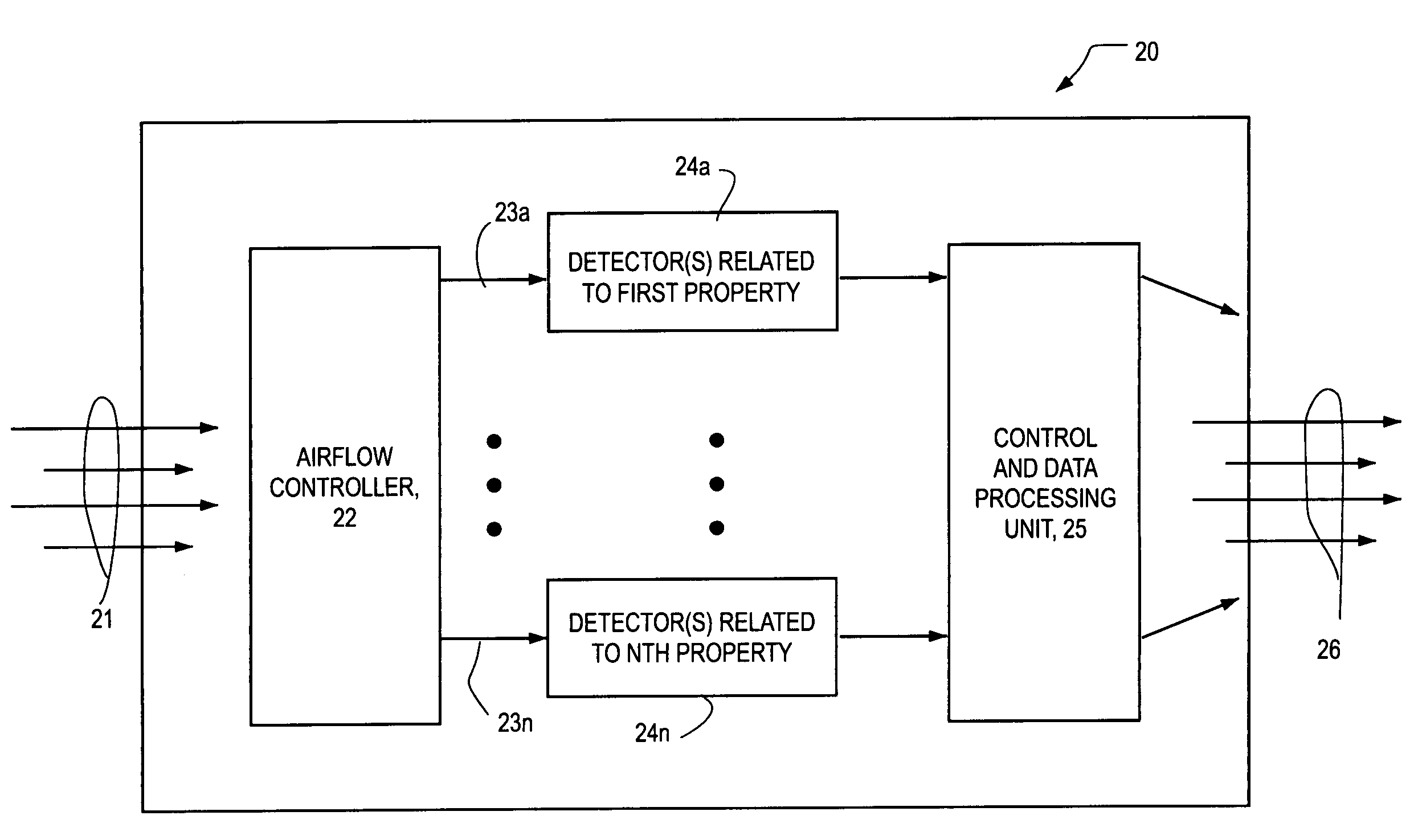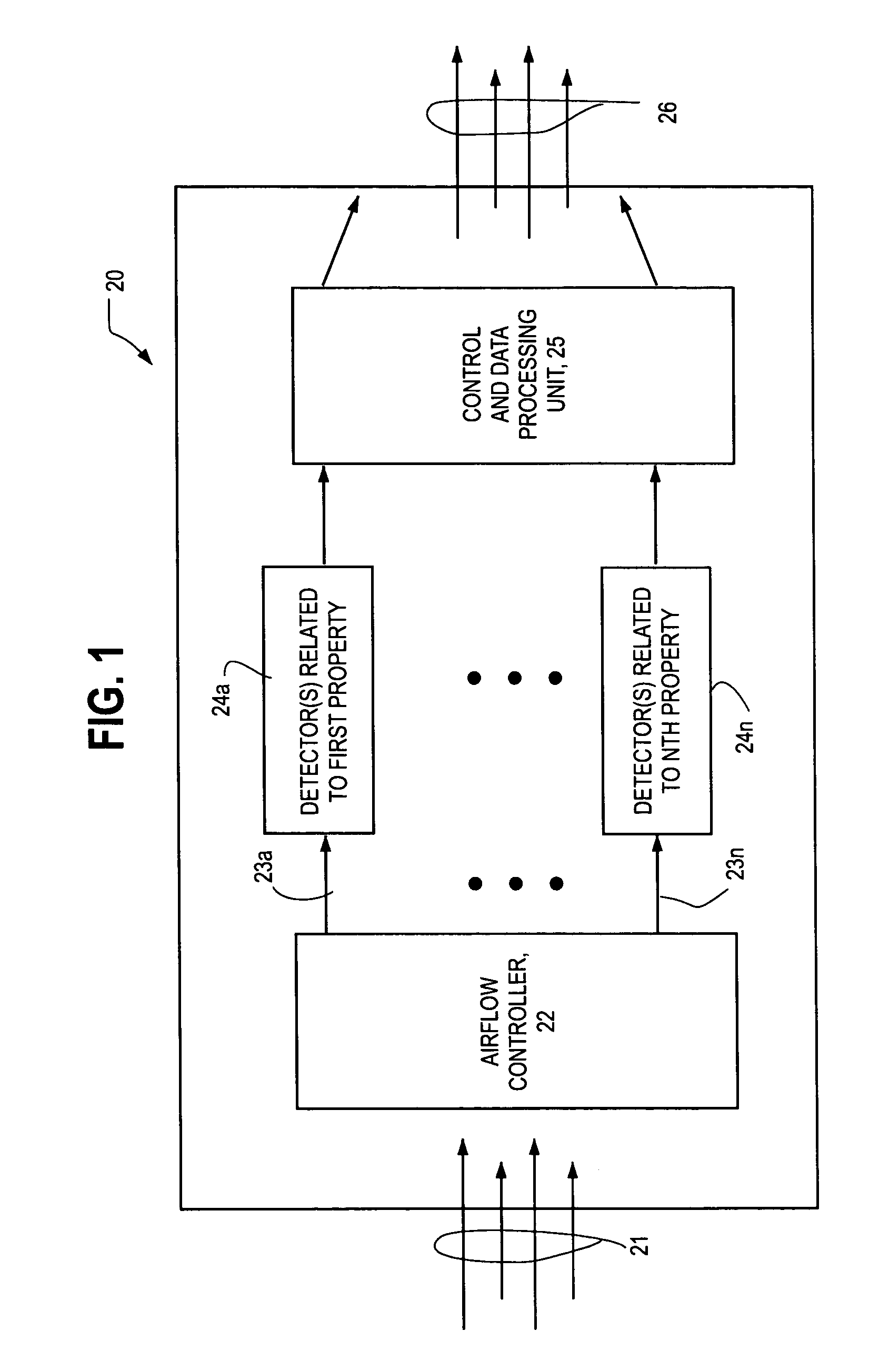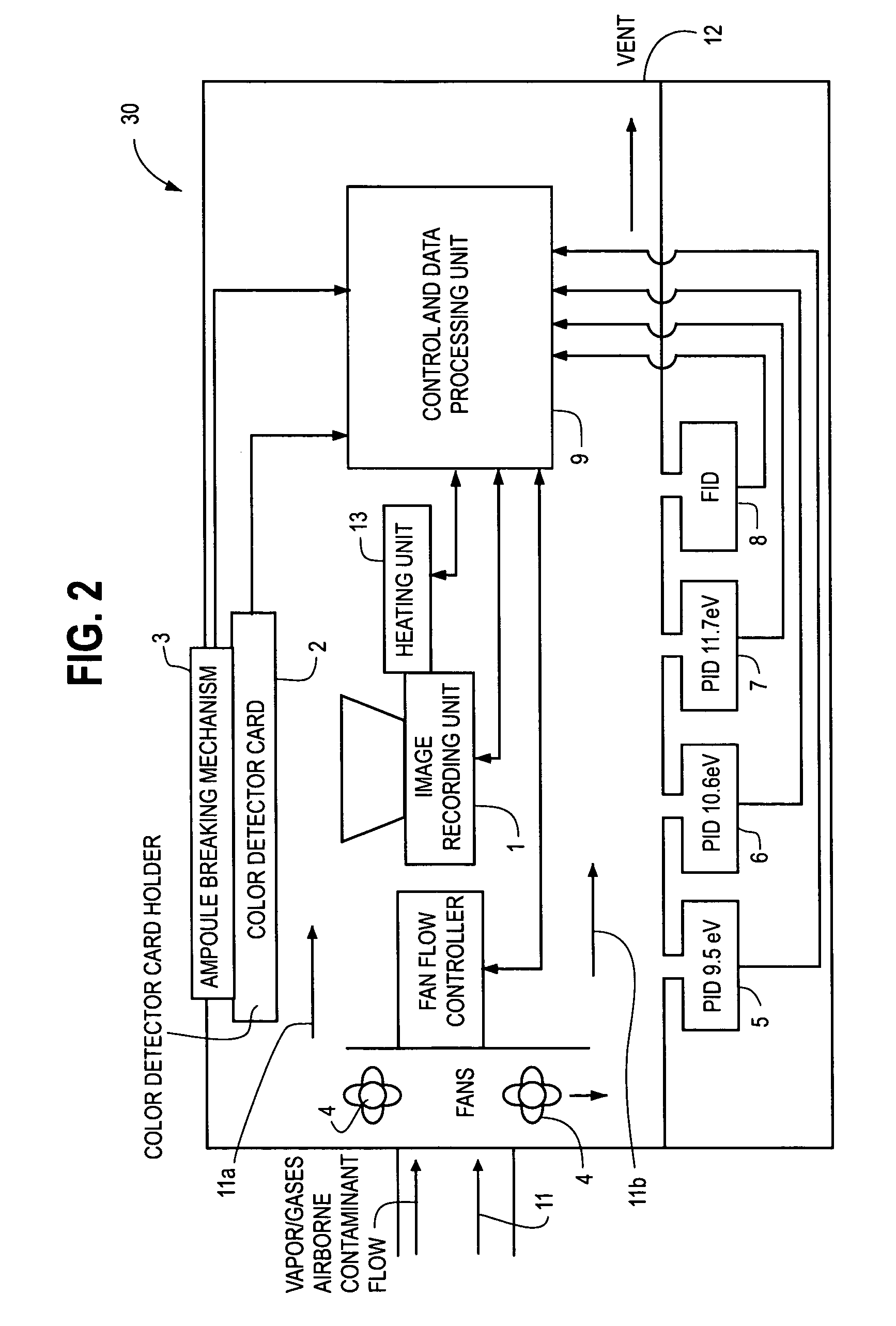System and method for detection and identification of airborne hazards
a technology for airborne hazards and detection methods, applied in fire alarms, instruments, alarms, etc., can solve problems such as confusion, tedious manipulation and interpretation of hazardous material detection equipment, and challenge the user of a disparate and complex detection equipment suite, so as to increase the confidence level
- Summary
- Abstract
- Description
- Claims
- Application Information
AI Technical Summary
Benefits of technology
Problems solved by technology
Method used
Image
Examples
example 1
[0105]The specific colorimetric detector for nerve agent indicates a positive for a nerve agent with a high enough concentration level to result in initial score of 70 points (60 points for the high concentration level and an additional 10 points for detection of a nerve agent). Data from a hygrometer indicates a RH above 60%. No data was received from any other specific calorimetric detectors. Data from a non-specific calorimetric pH sensor indicates a slightly acidic character which is acceptable for nerve agent in RHs above 60%. Thus, the pH data from this generic detector is synergistic with the Main Detection Event thereby causing 10 points to be added to the score. Data from the PID, FID and TCD detectors are also consistent thereby causing 15, 15 and 10 points, respectively, to be added to the score. The total score is then 120 points (60+10+10+15+15+10), thereby indicating a high confidence level in the determination that a nerve agent is present.
example 2
[0106]The specific calorimetric detector for chlorine is triggered at high concentration, resulting in an initial score of 60 points. The specific colorimetric detector for hydrogen chloride sensor is triggered at a low concentration. Relative humidity is measured at 70%. According to data from the Preloaded Database of Airborne Hazards, chlorine can hydrolyze to form hydrogen chloride. The existence of hydrogen chloride is consistent for chlorine in the presence of high humidity. Since the data from the other specific calorimetric detector (e.g., indicating the presence of hydrogen chloride as a hydrolysis product) is synergistic with the Main Detection Event (e.g., indicating the presence of chlorine), 20 points are added. A generic pH detector indicates pH in the acidic range, which is consistent with high humidity chlorine and hydrogen chloride, so 10 points are added. A generic calorimetric redox sensor indicates the presence of a strong oxidizer, which is consistent for chlori...
example 3
[0107]The specific colorimetric detector for phosgene is triggered at high concentrations, resulting in an initial score of 60 points. No data was received from any other specific colorimetric detectors. A generic redox detector indicates a strong reducing agent. This is inconsistent with the presence of phosgene since phosgene is more likely to function as an oxidizer. Since data from the generic redox detector is contradictory to the Main Detection Event, 10 points are subtracted from the score. A generic pH detector indicates a strong base, which is also inconsistent with the presence of phosgene. Consequently, 10 points are subtracted from the score. Data from the PID and FID detectors was consistent, resulting in 15 points each being added. The total score is then 70 points (60−10−10+15+15), indicating a less than high confidence level detection for phosgene. User display indicates that the test should be re-run.
PUM
 Login to View More
Login to View More Abstract
Description
Claims
Application Information
 Login to View More
Login to View More - R&D
- Intellectual Property
- Life Sciences
- Materials
- Tech Scout
- Unparalleled Data Quality
- Higher Quality Content
- 60% Fewer Hallucinations
Browse by: Latest US Patents, China's latest patents, Technical Efficacy Thesaurus, Application Domain, Technology Topic, Popular Technical Reports.
© 2025 PatSnap. All rights reserved.Legal|Privacy policy|Modern Slavery Act Transparency Statement|Sitemap|About US| Contact US: help@patsnap.com



